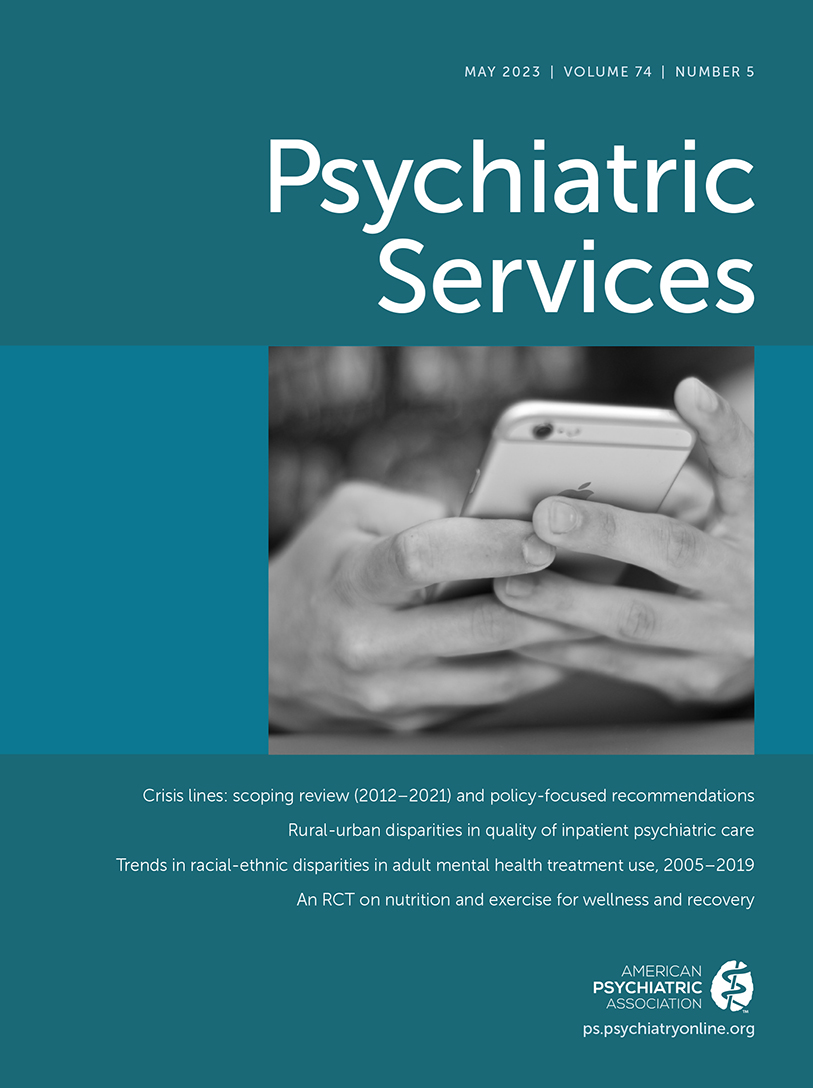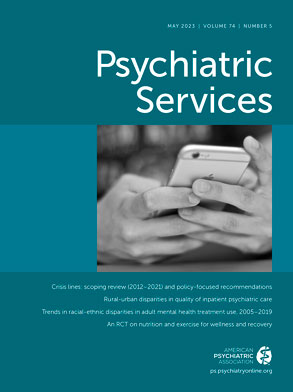The state of evidence for crisis support services remains in its infancy. As such, promising opportunities exist to move research, policy, and practice forward as the national 988 implementation takes hold.
Table 1 summarizes major gaps and potential future directions in this area. We share the following recommendations.
Enhance Training, Cultural Competence, and Evaluation
Despite some research on the effectiveness of crisis lines, several knowledge gaps remain. There is a distinct lack of literature addressing the effectiveness of training for long-term caller outcomes and for other proximal outcomes. An expanded focus on proximal outcomes is vital and should include how call center staff address lethal means safety and nonsuicidal self-injury. Long-term caller outcomes that may be important for training, research, and evaluation purposes include the seeking of mental health services postcrisis, suicidal ideation over time, and use of crisis lines or services. The literature that does discuss caller outcomes fails to include important factors, such as which training programs the employees and volunteers completed, the number of training programs completed, and the extent of skills used during calls. Although center volunteers provide referrals for callers to use after the call, many individuals have cited that lack of insurance or underinsurance was a primary barrier to seeking services after the call (
22). Thus, the referrals provided may not suit the caller’s needs or the referrals may not be up to date (
23). Call center employees and volunteers can benefit from training that highlights the referral process and how to tailor it to individual callers. In addition, call center effectiveness can be evaluated by tracking the rate of referrals used (
46). Research has shown that effectiveness of gatekeeper training (an intervention for non–mental health specialists to identify and appropriately react to suicidal behavior) (
47) can be improved by continued learning, reminders of what was learned, and program updates (
48). Therefore, we recommend implementation of repeated training for crisis center staff, with evaluation of the effectiveness of training at several time points. Training should also address callers’ specific requirements, access barriers, and the need to make appropriate local referrals.
Additional aspects of training require attention. Although there is some indication that hotline volunteers receive routine training, there are no specific requirements about training frequency, modality, or evaluation for centers affiliated with the NSPL (
15). At minimum, training should be designed to assess important gatekeeper training constructs, such as attitudes about suicide prevention, use of suicide prevention training skills, and intention to use skills in instances outside of training (
49). Several areas of training require improvement. First, through policy refinement, the NSPL should be mandated to publicize training information for staff in a transparent manner. Second, from a practice perspective, training needs to better account for attitudes toward suicide and other factors affecting counselor performance. Attitudes toward suicide can be evaluated during the initial training and targeted in subsequent training, because these attitudes can affect clinical decision making (
50). Finally, to make direct, geographically helpful referrals that meet callers’ needs, call center leaders should develop relationships with appropriate community resources (
51). State-level policy makers can consider NSPL–community agency partnerships that include keeping updated lists of services and providers in the immediate geographic area and furthering understanding of the barriers unique to the community.
Several high-risk groups (e.g., American Indians, Alaska Natives, people struggling with suicide loss) have not been included in targeted suicide prevention measures, such as crisis support lines (
https://www.samhsa.gov/suicide/at-risk). Moreover, although individual crisis lines that serve veterans, LGBTQ+ individuals, Spanish speakers, and people with impaired hearing exist, evaluation of crisis line volunteers’ culturally sensitive and nondiscriminatory performance is lacking. We recommend developing culturally responsive staff training and evaluation.
Basic research may be targeted toward assessment of the prevalence of hotline use by specific groups. For example, culturally informed gatekeeper training programs have been developed, have been shown to be effective, and are needed by racial-ethnic communities at risk (
52–
54). Similar basic research should take place at crisis services targeted to other high-risk groups. Cultural adaptation of training may include population-specific risk or protective factors, cultural beliefs about suicide, and codesign and facilitation of programs by multicultural experts or by members of the minoritized community. Evaluation outcomes for minoritized groups may include how effective hotline workers are in using culturally competent skills (e.g., cultural humility) and whether offered referrals are culturally appropriate. Call center evaluations should also include feedback questions asked of hotline users regarding cultural competency of the counselors. These recommendations align with current Centers for Disease Control and Prevention guidelines (
55) for culturally sensitive evaluation for minoritized groups. As the NSPL becomes more accessible through the 988 number, caller diversity will likely increase, and these individuals cannot all be diverted to specialized hotlines (e.g., Trevor Project, VCL). This increased call volume will require all volunteers to be equipped to understand cultural nuances and properly respond in a culturally competent manner.
Expand Research on Telephone-, Text-, and Chat-Based Services
The overall state of the research on crisis services was found to be relatively poor (
8). Use of the highest levels of rigor (e.g., randomized controlled trials) (
56) may be both impractical and unethical in many circumstances. For example, it would heighten risk to crisis service users to randomly assign them to some type of time delay or pure control condition. Such barriers place clear limitations on the quality of crisis line research. However, it is possible to answer a number of important questions within the bounds of ethical research. For instance, we noted above the need to enhance training for crisis service workers. It would be feasible to compare the impact of different types of training by offering competing training approaches (e.g., ASIST vs. other gatekeeper training), randomly assigning service users to staff members by training type, and comparing the possible association between crisis line workers’ training type and caller outcomes. To bolster the evaluation of such questions, additional information on long-term caller outcomes is needed. Carefully explained collection of information could be added to crisis line protocols during a follow-up contact. Incentivized research participation could be offered to service users after the initial contact to avoid concerns of coercion during a crisis and to enhance the amount of prospective evaluation data.
Text, chat, and other suicide lifelines have received little attention regarding their effects on suicidal and nonsuicidal outcomes. The new 988 number is also offered as a text option (
57) and will likely lead to an increase in individuals using the text service, despite the absence of clear research evidence of the efficacy of text crisis services in reducing distress and handling texter volume (
58). Future studies can address two areas. First, studies should be aimed at understanding how chat and text services affect user outcomes. Similar to research on crisis telephone lines, the focus should also include long-term outcomes after service use (
59). To combat the dearth of research on chat and text services, standardized evaluations of these services should be performed and should include suicidal and nonsuicidal outcomes (
60,
61). Second, the accessibility of chat and text services to high-risk populations should be studied. If these services are deemed effective, studies should be conducted to understand the types of populations, beyond adolescent and LGBTQ+ populations, who use these services and to learn how these services can be better promoted among these populations (
62).
Provide Ethics Oversight for Crisis Support Services
The introduction of newer crisis service formats, such as technology-based options, has yielded questions about ethical considerations for caller data. One recently publicized concern was raised about the CTL, where caller data were passed to a partner for-profit organization—with acknowledgment to the user about such practices offered through a link to a disclosure composed of many lengthy paragraphs (
63). Many crisis hotline users divulge sensitive information during calls. Private-sector disclosure and use of these sensitive data may amplify service users’ pain. Moreover, crisis line user confidentiality and privacy are paramount concerns. At present, crisis line calls are not guaranteed to be confidential or private, although geolocation data are not currently used by the NSPL, and callers have the option to remain anonymous (
https://screening.mhanational.org/content/what-happens-if-i-call-suicide-prevention-lifeline). Crisis line workers may call the police for geolocation if the caller is deemed to be an imminent risk to self and requires immediate intervention (
https://www.vibrant.org/geolocation-and-988). Police intervention to ensure the caller’s safety occurs for about 2%–3% of calls (roughly 48,000 calls:
https://screening.mhanational.org/content/what-happens-if-i-call-suicide-prevention-lifeline;
https://www.vibrant.org/geolocation-and-988). How these matters will be addressed as 988 is rolled out in localities remains to be determined. Importantly, mental health policy, such as the National Suicide Hotline Designation Act of 2020, has not caught up to the ethics involved in technology-based services.
We believe policy makers need to address the ethical concerns of how crisis support service information is used. A need exists for caller data to be used for research purposes (e.g., surveys on caller experiences); however, these data must be collected in an ethical, confidential manner. Ethical data practice should clearly inform users, before a conversation is begun, on the ways in which their data will be handled (
64). For example, the CTL recently enacted a policy allowing users to delete their data (
https://www.crisistextline.org/privacy). This practice lets users decide whether their data can be used. Additional consideration can be given to having comprehensive and transparent conversations with callers, texters, and chat users about their data. These conversations could take place after the crisis situation, and staff should clearly state the option to opt in or out of data use and should avoid legal jargon. For example, the Trans Lifeline is currently working on a policy that would clearly inform callers of the hotline’s use of data storage and call encryption, in layperson language (
https://translifeline.org/hotline/#faq). In addition, auditing procedures by a third party (e.g., an accrediting nonprofit body or government organization) could be established to ensure responsible handling of caller data (
64). A final consideration for ethical research on caller outcomes could include linkage of caller data to a secured system, as the VCL does through its connection to the VHA (
42).
Expand Crisis-Related Resources
Many of the issues outlined above can be partially rectified by providing greater funding to support workers, call centers, and the overall crisis system. Rollout of 988 will increase call volume—leading to worries about inadequate numbers of trained staff to address caller needs (
65). We recommend that all states adopt funding measures to cover the cost of creating and sustaining call center operations. This funding priority would also allow for training opportunities beyond the ASIST model to help address the need for culturally competent service provision. The gaps in practice and research that have been identified are largely the result of underfunding of evidence-based practices and systems (
66). According to guidelines established by SAMHSA (
67), an extensive crisis response system would include a regional crisis call center, a mobile crisis unit, and crisis stabilization facilities in addition to psychiatric inpatient options. Creating a well-managed crisis referral system will support more individuals and divert them from medical emergency services (
https://thinkbiggerdogood.org/how-communities-must-use-988-to-improve-care-and-correct-crisis-system-disparities). Funding will also allow further designation of resources for research support for crisis centers to help them better understand and adapt their services to callers, texters, and chat users.

